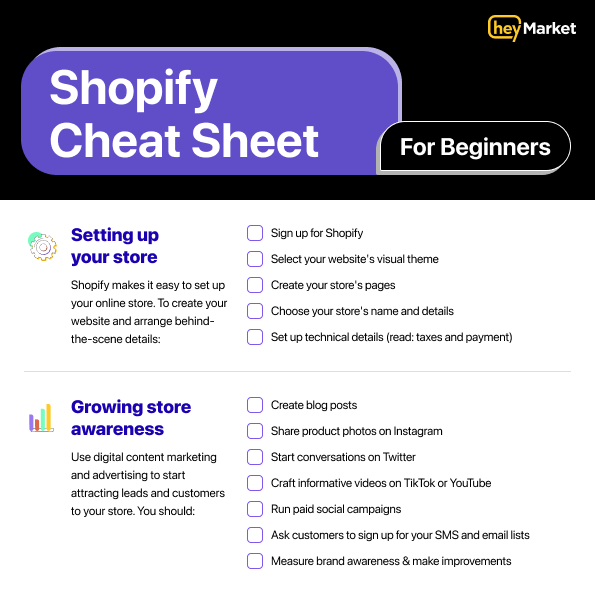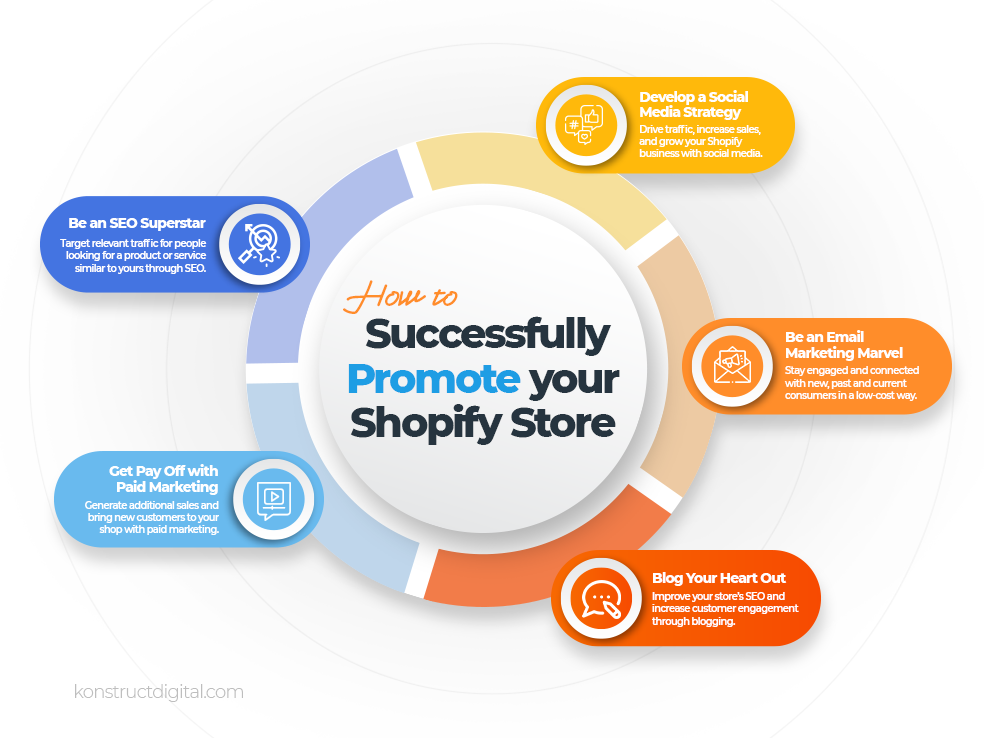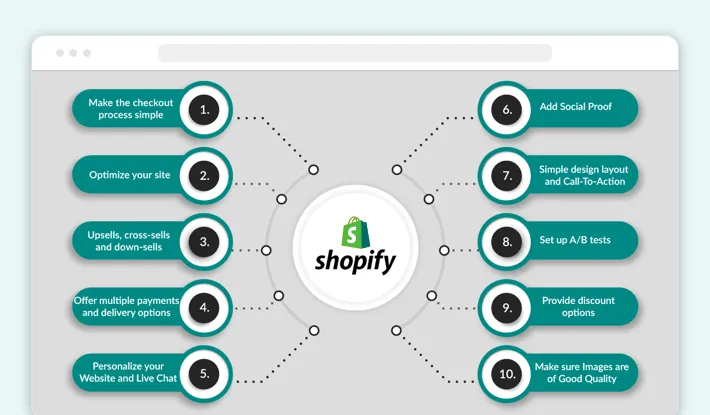Uncover the secret to increasing traffic to your Shopify store with this comprehensive step-by-step guide to setting up SEO.

Image courtesy of via DALL-E 3
Table of Contents
Welcome to our step-by-step guide to setting up SEO for your Shopify store! If you’re wondering what SEO is and why it’s essential for your online store, you’ve come to the right place. In this section, we’ll explain the basics of SEO and how it can help your Shopify store thrive in the competitive world of e-commerce.
What is SEO?
SEO stands for search engine optimization. In simple terms, it’s the process of making your website more visible to people who are searching for products or services like yours on search engines like Google. By optimizing your website for search engines, you can improve your chances of appearing higher in search results and attracting more potential customers to your online store.
Why SEO Matters for Your Shopify Store
SEO is crucial for your Shopify store because it can significantly impact your online visibility and ultimately your sales. When your store ranks higher in search results, more people are likely to click on your website, explore your products, and make a purchase. By implementing effective SEO strategies, you can drive more organic traffic to your store and increase your chances of success in the competitive e-commerce landscape.
Choosing the Right Keywords
Introduction to Keywords
In the world of online stores, keywords are like secret codes that help search engines like Google understand what your website is all about. These keywords are the words or phrases that people type into search engines when they are looking for something. By using the right keywords on your website, you can make sure that your Shopify store shows up when people are searching for products you sell.
Using Tools to Find Keywords
Now, the big question is: how do you know which keywords to use? Don’t worry, there are tools like Google Keyword Planner that can help you find the best keywords for your Shopify store. These tools tell you how often people search for specific keywords and how difficult it is to rank for them. By choosing the right keywords based on this data, you can attract more customers to your store.
Optimizing Your Shopify Store’s On-Page SEO
When it comes to making sure your Shopify store is easily discoverable by search engines, on-page SEO is key. Optimizing your content can help improve your store’s visibility and attract more potential customers. Let’s dive into some essential steps you can take to enhance your Shopify store’s on-page SEO.
Optimizing Title Tags
Title tags are like the headlines of your web pages. They tell search engines and visitors what the page is about. Make sure to include relevant keywords in your title tags to improve your store’s search engine ranking. Keep your title tags concise, clear, and compelling to entice users to click.
Creating Good Meta Descriptions
Meta descriptions are brief summaries of your web pages displayed on search engine results pages. They provide users with a sneak peek of what to expect when they click on your link. Write unique and engaging meta descriptions for each page, incorporating relevant keywords to improve click-through rates.
Using Headers Correctly
Headers, marked as H1, H2, H3, etc., help organize your content and make it easier for search engines to understand the structure of your pages. Use headers to break up your content into sections and include keywords naturally within them. Proper use of headers not only aids SEO but also enhances the readability of your content for visitors.
Product Descriptions and Images
Product descriptions are like mini sales pitches for your items. They should be detailed and captivating to entice customers to make a purchase. When writing product descriptions, make sure to highlight the features, benefits, and unique selling points of each item. Use descriptive language that paints a picture in the customer’s mind, helping them imagine how the product will enhance their life. Be sure to include relevant keywords naturally within the description to improve your store’s SEO.

Image courtesy of www.heymarket.com via Google Images
Optimizing Images
Images play a crucial role in online shopping experiences. High-quality and visually appealing images can attract more customers to your store. When uploading product images, ensure they are of the right size and resolution for quick loading times. Additionally, don’t forget to add alt text to your images. Alt text is a brief description of the image that helps search engines understand what the image is about, further improving your SEO. Use descriptive and keyword-rich alt text to enhance the visibility of your products in search results.
Setting Up Your Store’s Structure
When setting up your Shopify store, it’s vital to pay attention to the URLs of your webpages. URLs play a significant role in determining your search engine ranking. To ensure you have SEO-friendly URLs, make sure they are descriptive, concise, and contain relevant keywords. This helps search engines understand the content of your pages and can improve your visibility online.
Improving Navigation
Another crucial aspect of setting up your store for SEO success is optimizing navigation. Your website’s navigation should be intuitive and user-friendly, allowing visitors to easily find what they’re looking for. Clear navigation not only enhances the user experience but also helps search engines crawl and index your site more effectively. Consider organizing your products into categories and subcategories, implementing a search bar, and creating a sitemap to improve navigation for both users and search engines.
Building High-Quality Backlinks
Backlinks are like endorsements for your Shopify store from other websites. They show search engines that your site is trustworthy and valuable, which can help improve your SEO ranking. Let’s explore what backlinks are and how you can earn them to boost your store’s authority online.

Image courtesy of www.konstructdigital.com via Google Images
What Are Backlinks?
Backlinks, also known as external links, are links from other websites that direct users to your site. Think of them as recommendations from one website to another. When a reputable website links to your store, it acts as a vote of confidence in the eyes of search engines.
How to Get Backlinks
Earning backlinks requires effort, but it’s worth it for improving your SEO. Here are some tips on how to secure high-quality backlinks:
1. Create valuable and shareable content that other websites would want to link to. This could be informative blog posts, infographics, or videos that provide value to your target audience.
2. Reach out to influencers or industry experts in your niche and ask if they would be interested in featuring your content on their websites or social media platforms.
3. Guest post on reputable blogs or websites within your industry. This not only helps you showcase your expertise but also allows you to include backlinks to your own store.
4. Participate in online communities, forums, or social media groups related to your niche. Engaging with others and sharing your knowledge can lead to natural backlinks as others reference your content.
Remember, quality is more important than quantity when it comes to backlinks. Focus on building relationships with authoritative websites and creating valuable content that others will want to link to.
Analyzing and Improving Your SEO
One of the most important tools for monitoring your SEO performance is Google Analytics. It helps you track the traffic coming to your Shopify store, understand your audience, and identify what is working well and what needs improvement.
Setting up Google Analytics is easy. Simply create an account, set up your website profile, and insert the tracking code into your Shopify store. Once it’s up and running, you can delve into a treasure trove of data about your site visitors, their behavior, and the effectiveness of your SEO strategies.
Making Sense of SEO Reports
After collecting data from Google Analytics and other SEO analysis tools, you may be faced with a slew of reports and numbers. Understanding these reports is vital to making informed decisions on how to improve your SEO.
Look at metrics such as organic traffic, bounce rate, pages per session, and average session duration to gauge how well your SEO efforts are performing. By regularly analyzing these reports, you can pinpoint areas for improvement and fine-tune your SEO strategies to drive more traffic and increase sales on your Shopify store.
Creating and Promoting Content
When it comes to optimizing your Shopify store for search engines, creating high-quality content is key. Content plays a crucial role in attracting visitors and improving your store’s SEO performance. Let’s delve into how blog posts and articles can enhance your online presence and how to effectively promote this content to reach a wider audience.

Image courtesy of genovawebart.com via Google Images
Blog Posts and Articles
One effective way to boost your store’s SEO is by regularly publishing blog posts and articles. These pieces of content not only provide valuable information to your audience but also help increase your website’s visibility on search engines. When creating blog posts, it’s essential to focus on relevant topics that resonate with your target audience. Consider incorporating keywords that are related to your products or industry to improve your search engine rankings.
Within your blog posts, aim to provide useful and engaging content that keeps your readers interested. Add images, videos, and infographics to make your posts visually appealing and informative. Remember to optimize your content by including relevant keywords in the title, headings, and throughout the body of the text.
Promoting Your Content
Once you’ve created compelling blog posts and articles, the next step is to promote this content to drive traffic to your Shopify store. One effective way to do this is by sharing your posts on social media platforms like Facebook, Instagram, and Twitter. By leveraging social media, you can reach a larger audience and generate interest in your products or services.
Additionally, consider reaching out to influencers or industry experts to help promote your content. Collaborating with influencers can give your blog posts a wider reach and increase their visibility online. You can also repurpose your content into different formats, such as videos or podcasts, to cater to different audiences and attract more visitors to your store.
Remember, the key to successful content promotion is consistency. Keep producing valuable content that resonates with your audience and actively promote it across various channels to drive traffic and improve your store’s SEO performance.
Conclusion
In conclusion, setting up SEO for your Shopify store is crucial for increasing visibility and driving traffic to your online business. By implementing the step-by-step strategies outlined in this guide, you can optimize your store for search engines and improve its online presence.
Remember, SEO is an ongoing process that requires continuous effort and monitoring. It’s essential to regularly analyze and make improvements based on data to ensure your store’s success in the competitive online market.
Don’t be afraid to experiment with different SEO techniques and stay updated on the latest trends in search engine optimization. By staying dedicated and proactive in your SEO efforts, you can achieve long-term success and see your Shopify store thrive.
Want to turn these SEO insights into real results? Seorocket is an all-in-one AI SEO solution that uses the power of AI to analyze your competition and craft high-ranking content.
Seorocket offers a suite of powerful tools, including a Keyword Researcher to find the most profitable keywords, an AI Writer to generate unique and Google-friendly content, and an Automatic Publisher to schedule and publish your content directly to your website. Plus, you’ll get real-time performance tracking so you can see exactly what’s working and make adjustments as needed.
Stop just reading about SEO – take action with Seorocket and skyrocket your search rankings today. Sign up for a free trial and see the difference Seorocket can make for your website!
Frequently Asked Questions (FAQs)
How Long Does It Take to See SEO Results?
SEO is a gradual process, and it may take some time before you start seeing significant improvements in your search rankings. Generally, it can take anywhere from a few weeks to several months to notice a difference. The timeline can vary depending on factors such as the competitiveness of your industry, the quality of your SEO efforts, and the consistency of your strategies. Patience is key when it comes to SEO, as the results are worth the wait!
Do I Need to Hire an SEO Expert?
While hiring an SEO expert can be beneficial, especially if you’re new to SEO or don’t have the time to dedicate to it, it’s not always necessary. With the right resources and guidance, you can learn to implement effective SEO strategies on your own. There are plenty of online resources, guides, and tools available to help you optimize your Shopify store for search engines. However, if you have a complex website or struggle with understanding technical aspects, hiring an expert could save you time and ensure the best results.







